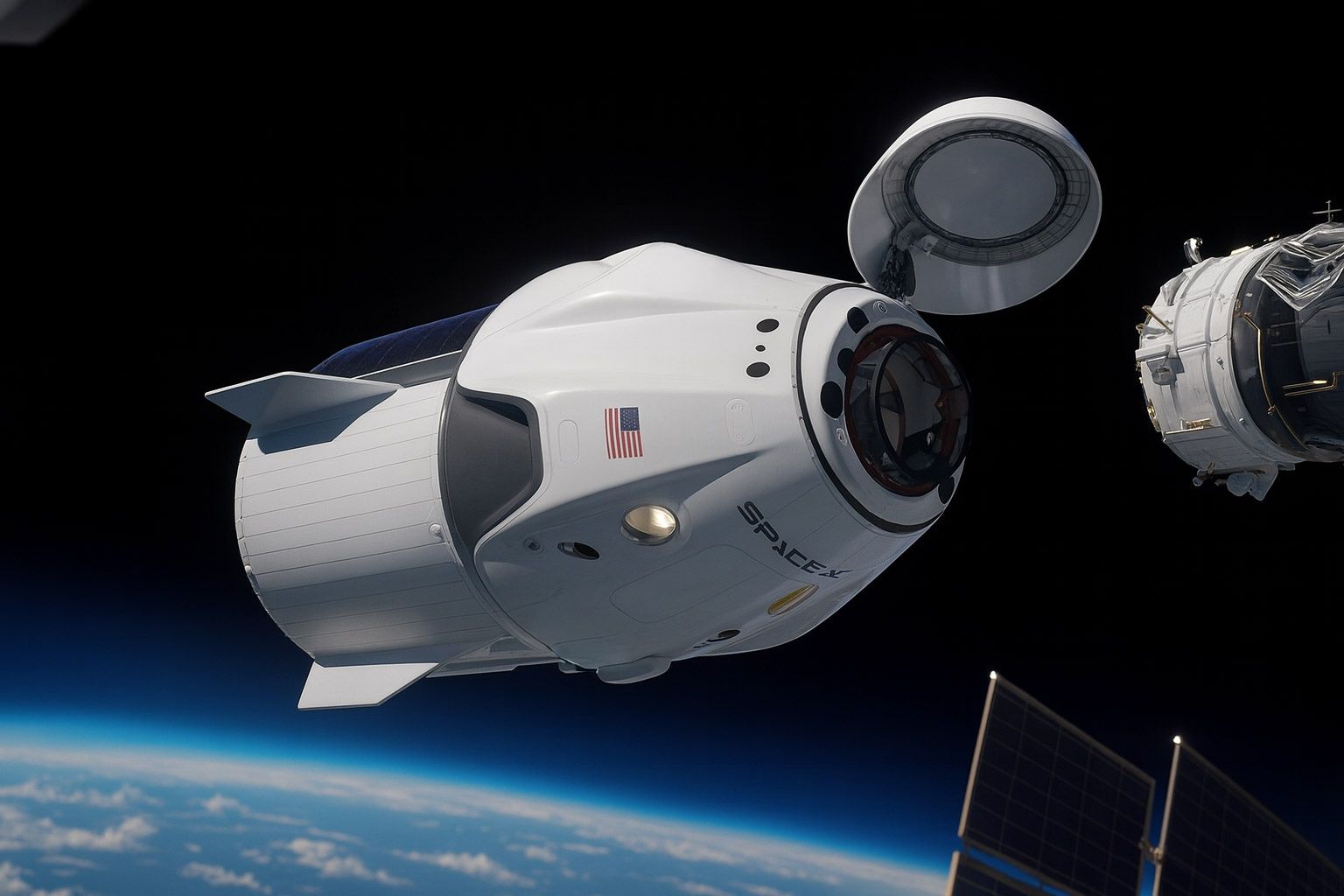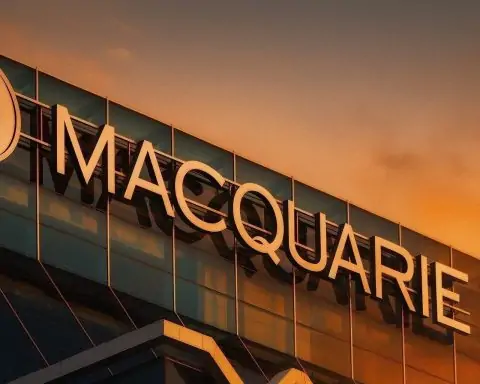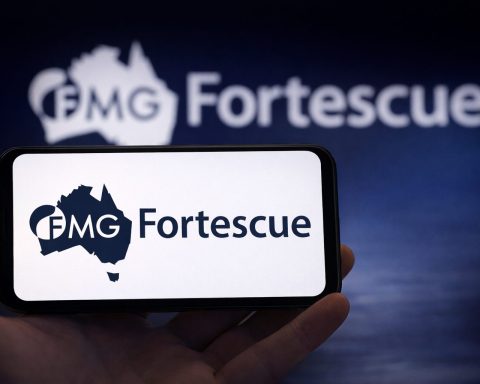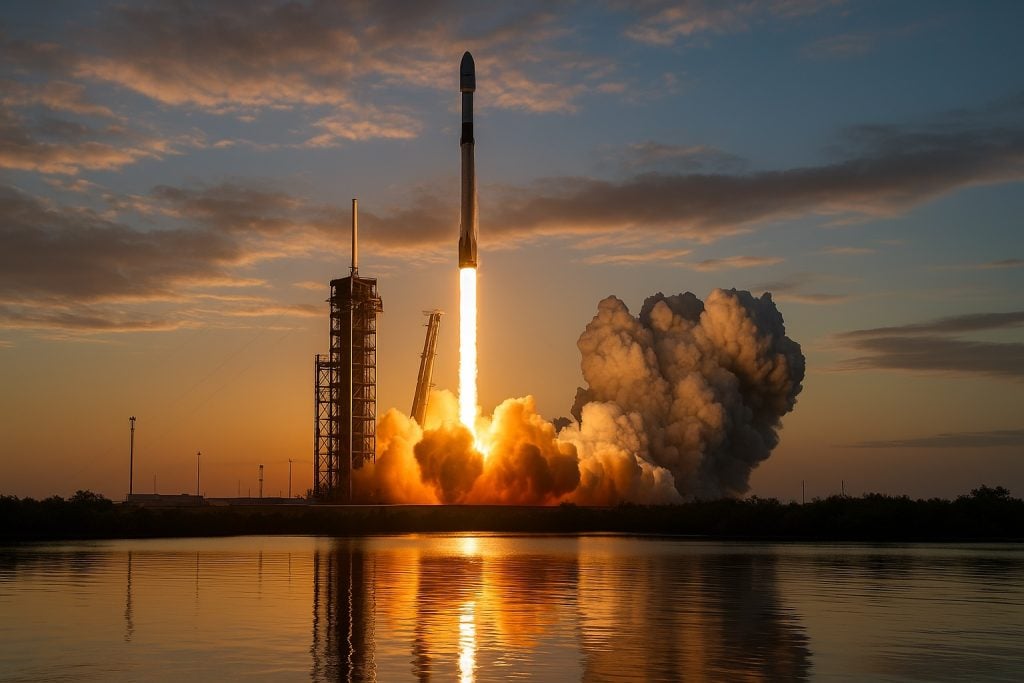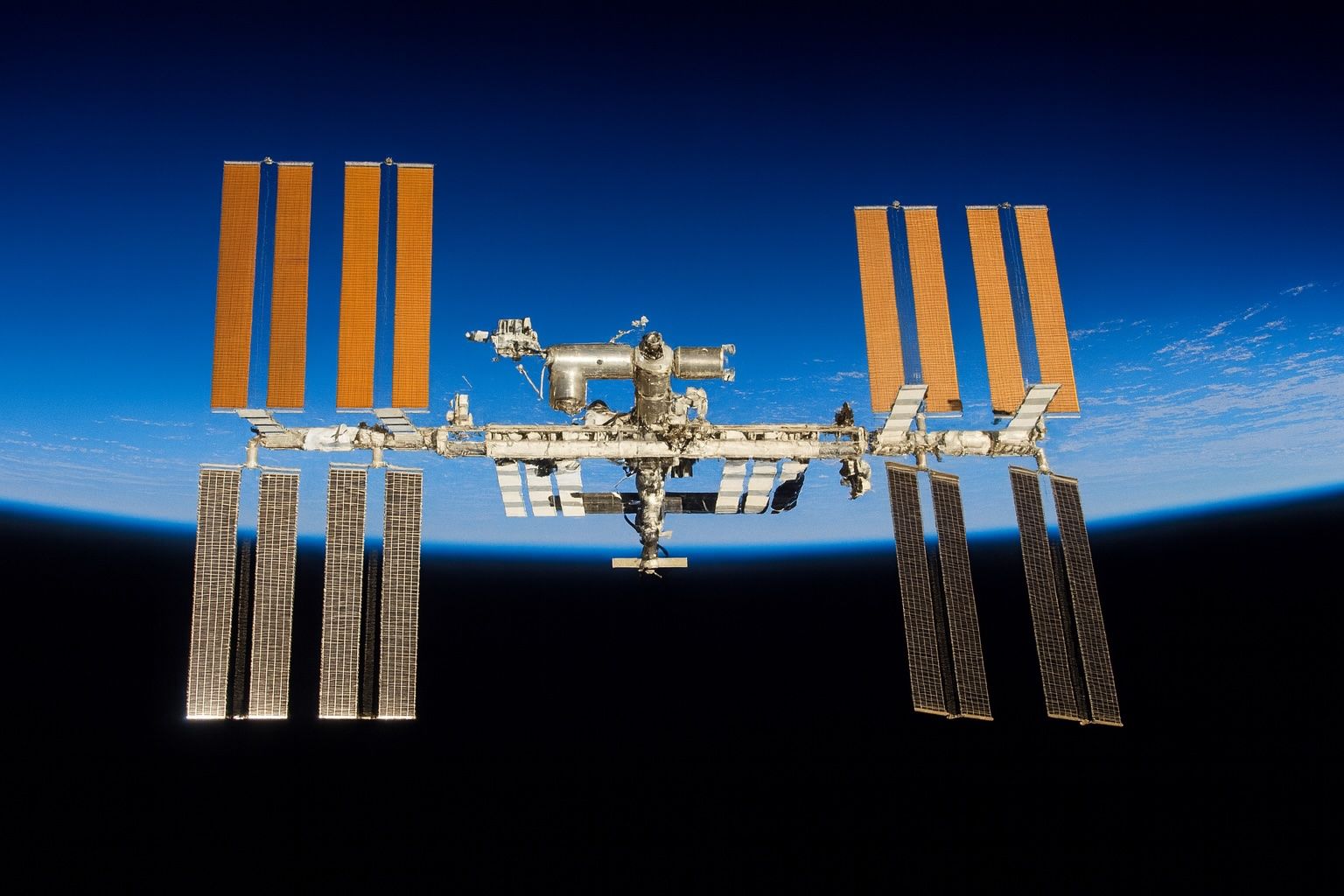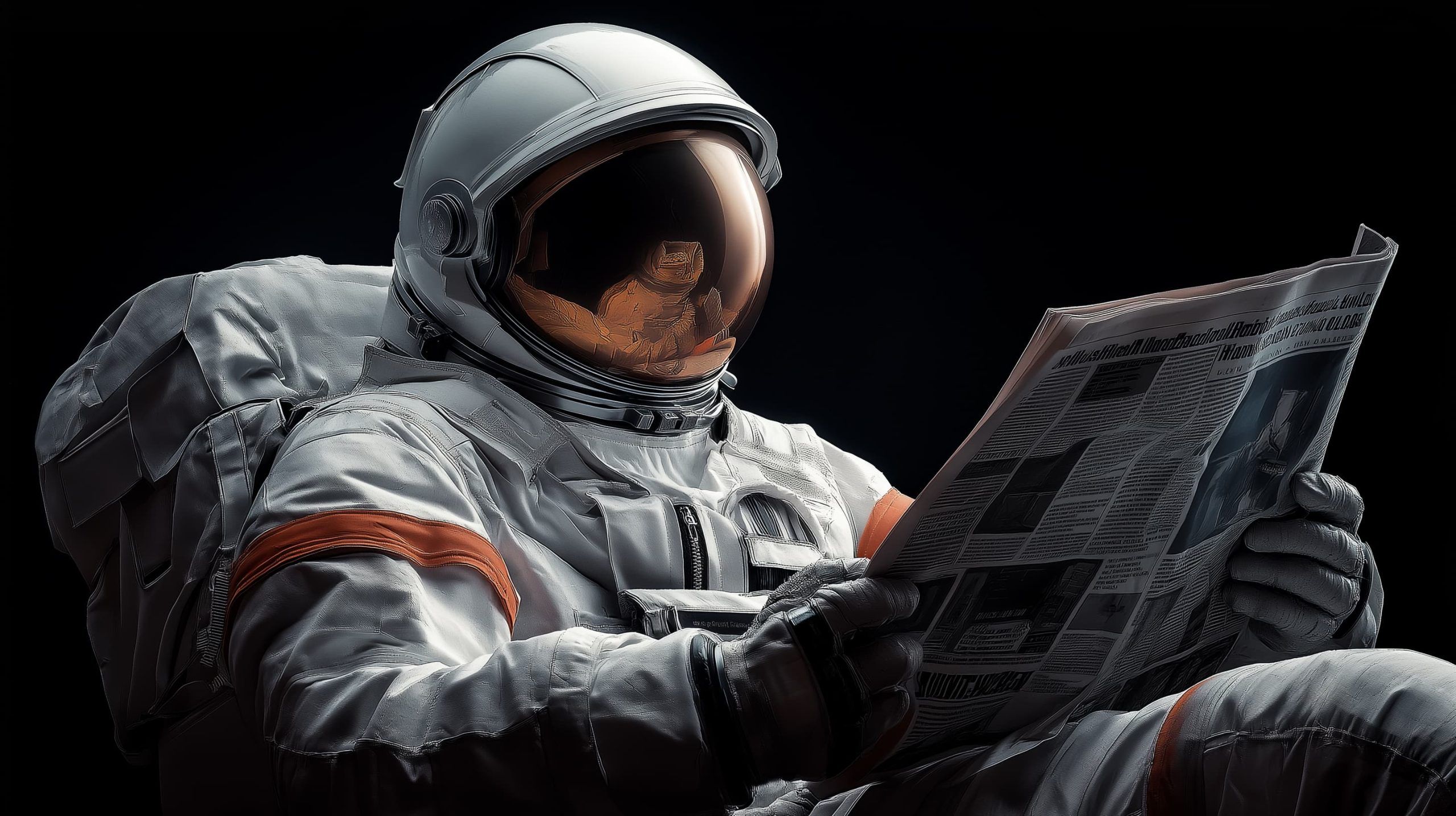- In 2011, NASA retired the Space Shuttle, leaving the ISS without its primary American supply line.
- May 2012 marked SpaceX’s Dragon as the first commercial spacecraft to rendezvous and berth with the ISS, delivering about 1,200 pounds of cargo and later returning roughly 1,300 pounds.
- October 2012’s CRS-1 mission launched the first official NASA Commercial Resupply Services delivery, providing around 400 kg of supplies to the station.
- On June 28, 2015, a Falcon 9 rocket failure destroyed the CRS-7 mission and its Dragon cargo.
- June 3, 2017, the CRS-11 mission demonstrated the first reuse of a Dragon capsule, signaling major cost savings potential.
- May 30, 2020, the Demo-2 mission carried NASA astronauts Doug Hurley and Bob Behnken on Crew Dragon Endeavour, the first crewed launch from U.S. soil since 2011.
- December 6, 2020, CRS-21 launched Cargo Dragon 2, the maiden flight of the upgraded capsule that autonomously docked to the ISS and carried about 2,900 kg of cargo.
- November 2024 saw the first Dragon-based ISS reboost using Draco thrusters during CRS-31, a capability traditionally done by Russia or Progress ships.
- August 24, 2025, CRS-33 lifted off from Kennedy Space Center with roughly 2,270 kg (about 5,000 lb) of cargo and science investigations.
- By 2025, SpaceX’s Dragon program had flown dozens of missions, delivered over 100 tons of cargo to the ISS, and established autonomous docking and reusable capsules as a central part of ISS logistics.
In 2011, NASA’s Space Shuttle fleet retired, leaving the International Space Station (ISS) without its primary American supply line. A bold replacement emerged from the private sector: SpaceX’s Dragon spacecraft. Fast forward to 2025, and the SpaceX Dragon – a reusable orbital capsule – has become a critical lifeline for the ISS, ferrying tons of cargo (and even astronauts) to and from the station on a routine basis. This comprehensive report explores Dragon’s journey from concept to workhorse, how it superseded earlier spacecraft like the Shuttle and Progress, its technical prowess (reusability, payload, launch & splashdown recovery), the evolution of NASA’s Commercial Resupply Services (CRS) contracts, major mission milestones, and the wide-ranging impact on ISS operations and international cooperation. Along the way, we’ll hear expert commentary from NASA officials, SpaceX leaders, astronauts, and analysts on why Dragon’s success is revolutionizing space station resupply.
The Rise of Dragon: A New Era in Spaceflight History
SpaceX’s Dragon had humble beginnings but an ambitious goal: to become the first privately-developed spacecraft to service the ISS. In 2006–2010, NASA’s Commercial Orbital Transportation Services (COTS) program provided seed funding and expertise for companies to develop cargo vehicles after the Shuttle’s retirement [1]. SpaceX built Dragon and its Falcon 9 rocket “from a blank sheet” in just a few years [2]. In December 2010, an unmanned Dragon test flight orbited Earth and safely splashed down – proving a private capsule could survive reentry. This set the stage for a historic ISS mission.
In May 2012, SpaceX’s Dragon made history as the first commercial spacecraft ever to rendezvous and berth with the ISS. Dragon was loaded with about 1,200 pounds of food, water, clothing and experiments [3] [4]. After astronauts grappled and berthed it to the station, NASA Administrator Charles Bolden hailed the moment: “The Dragon capsule is a tangible example of the new era of exploration unfolding right now” [5]. SpaceX’s founder Elon Musk, watching from California, declared it “a great day for the country and the world,” adding that it’s one step towards making humanity a “multi-planet species” [6]. Astronaut Don Pettit quipped that the freshly arrived Dragon “smelled like a brand new car” and felt like a “pickup truck” inside [7] – a welcome new ride bringing vital supplies. After a week attached, Dragon returned to Earth intact, becoming (at that time) the only robotic cargo craft capable of surviving reentry (all others burned up) [8]. This ability to deliver cargo both to and from orbit was a game-changer.
From that initial demo, Dragon rapidly evolved. By October 2012, SpaceX flew its first official CRS mission (CRS-1), kicking off a series of contracted resupply flights [9]. Over the next few years, the Dragon 1 cargo capsule routinely hauled payloads to ISS, while SpaceX iterated on the design. Not everything went perfectly – a Falcon 9 rocket failure in June 2015 destroyed a Dragon (CRS-7) and its cargo – but SpaceX learned from the setback and resumed flights within months. By 2017, the company achieved a major milestone: re-flying a previously used Dragon capsule. On the CRS-11 mission, a refurbished Dragon delivered nearly 6,000 lbs of supplies to ISS, marking the first time a private spacecraft made a repeat delivery to the station [10]. NASA astronaut Jack Fischer, after capturing this Dragon, lauded the feat: “These people have supplied us with a vast amount of science and supplies – really fuel for the engine of innovation we get to call home, the International Space Station” [11].
Critically, SpaceX always intended Dragon to carry humans. The original cargo Dragon was designed “from the outset to carry crew,” with a pressurized cabin and life-support systems as a foundation [12]. In the 2010s, under NASA’s Commercial Crew Program, SpaceX developed the Crew Dragon (Dragon 2) capsule to transport astronauts. After an uncrewed orbital test in 2019, Crew Dragon made global headlines in May 2020 by launching two NASA astronauts (Demo-2 mission) – the first crewed flight from U.S. soil since the Shuttle’s 2011 retirement. “We’re on the precipice of launching American astronauts on American rockets from American soil again,” exclaimed NASA Administrator Jim Bridenstine as that mission approached [13]. The Demo-2 flight succeeded, and since then Crew Dragon has conducted regular crew rotations to the ISS (typically carrying four astronauts per flight). SpaceX’s achievement ended NASA’s sole reliance on Russia’s Soyuz for transporting crews [14] [15]. By 2025, SpaceX had launched a dozen crewed missions for NASA (including Demo-2 and Crew-1 through Crew-11), firmly establishing Dragon as the workhorse for both cargo and crew to the ISS.
Replacing the Shuttle and Old Supply Ships
Dragon’s rise must be understood in context: it filled a critical gap left by the Space Shuttle and complemented other nations’ vehicles. The Space Shuttles carried not only astronauts but also large cargo (up to 27,000 kg) to the ISS, including modules and science racks, and uniquely could bring hefty items back to Earth. When the Shuttle program ended in 2011, the ISS lost its primary U.S. supply truck and down-mass vehicle (for return cargo). For years after, NASA had to rely on international partners and interim solutions for ISS logistics.
Fortunately, the ISS was designed as an international endeavor with multiple supply craft: Russia’s Progress freighters (uncrewed, disposable cargo ships) had been delivering food, fuel, and spares since the station’s early days and continued to do so. Europe’s ATV (Automated Transfer Vehicle) – a large autonomous freighter – flew five missions from 2008–2014, and Japan’s HTV (H-II Transfer Vehicle) flew nine missions from 2009–2020, each bringing up several tons of equipment. However, all of these vehicles (Progress, ATV, HTV) are one-way only – they burn up upon reentry, and none could return cargo to Earth. NASA urgently needed a domestic resupply solution after 2011, especially for experiments that required retrieval and for routine delivery of U.S. equipment without depending entirely on foreign rockets.
That solution was the Commercial Resupply Services program and SpaceX Dragon. In 2008, even before the last Shuttle flew, NASA signed its first CRS contracts: $1.6 billion to SpaceX for 12 Dragon cargo missions, and $1.9 billion to Orbital Sciences (now Northrop Grumman) for 8 Cygnus cargo missions [16]. This was a radical shift – NASA would buy cargo delivery as a service from private companies, rather than operate its own vehicles. The strategy paid off quickly. SpaceX’s Dragon became the first American spacecraft to reach the ISS after the Shuttle’s retirement, restoring U.S. access to the station [17]. Its arrival marked “a shift towards outsourcing space expeditions to the private sector,” as one report noted, freeing NASA to focus on deep-space goals [18]. ISS Program Manager Mike Suffredini even joked that dealing with a U.S. company like SpaceX simplified logistics – no more international customs paperwork for cargo, unlike with Russian, European or Japanese shipments [19].
Orbital’s Cygnus spacecraft also joined the fleet in 2014, giving NASA a second commercial provider. But Dragon had two unique advantages: reusability and Earth return capability. In the 2012 demo, Dragon brought home 1,367 pounds of station hardware and experiment samples to scientists on Earth [20] – a capability unmatched by Progress, HTV, or Cygnus (which are all disposable). “Dragon is the only spacecraft currently flying capable of returning significant amounts of cargo to Earth,” SpaceX noted proudly [21]. In essence, Dragon picked up where the Shuttle left off in terms of ferrying material both up and down.
Dragon’s success gradually supplanted the need for other craft. Europe retired the ATV in 2015 after fulfilling its ISS obligations, and Japan flew the last HTV in 2020, planning to upgrade to a newer vehicle later. In the post-Shuttle era, SpaceX Dragon (US), Cygnus (US), and Progress (Russia) became the mainstay resupply vehicles, with Dragon handling the heaviest loads and all the return freight for NASA. By maintaining two independent U.S. suppliers (SpaceX and Northrop Grumman), NASA also improved redundancy – if one provider has an issue, the other can pick up slack. For example, when a SpaceX rocket failure lost CRS-7 in 2015, NASA leaned on a Japanese HTV and a Russian Progress that year to cover critical supplies, and SpaceX quickly bounced back with CRS-8 the next year carrying a vital inflatable module experiment. The ISS program thus proved resilient, but having American capsules like Dragon has been a huge relief. After Dragon’s 2012 debut, astronaut Don Pettit radioed down during the berthing, “It looks like we’ve got us a dragon by the tail,” humorously noting the moment the U.S. got its own cargo dragon under control [22].
Today, SpaceX’s Dragon is indispensable for the ISS. It regularly delivers food, science experiments, tools, spacewalk gear, even holiday treats for crews (yes, ice cream has flown up in Dragons) – and returns precious research samples and faulty hardware that engineers want to inspect. The vehicle’s reliability and capacity have grown to the point that it has effectively taken over the role of the Space Shuttle for cargo. “We’re working to open a new frontier for commercial opportunities in space,” SpaceX’s leadership said during the first CRS mission [23] – and indeed, Dragon opened a new chapter where commercial spacecraft keep the multinational ISS supplied in partnership with government agencies.
How Dragon Works: Reusability, Capacity, and Cutting-Edge Capabilities
What makes the SpaceX Dragon so capable as a supply ship? In short: high payload capacity, reusability, autonomous operation, and safe recovery. SpaceX’s development of Dragon embraced innovation at every step, yielding a spacecraft that is both technologically advanced and cost-efficient. Here’s an overview of Dragon’s key technical features:
- Heavy Cargo Lift: Each Dragon can carry up to 6,000 kg (13,200 lb) of payload to low Earth orbit, split between its pressurized capsule and unpressurized trunk section [24]. In practice, missions to ISS typically deliver around 2,500–3,300 kg to the station due to volume and packing constraints [25]. Even so, Dragon’s lifting power rivals the capacity of the retired Shuttle’s logistics modules, and far exceeds what the smaller Russian Progress can carry (~2,400 kg). For example, SpaceX’s recent CRS-33 mission lofted about 5,000 pounds (2,270 kg) of supplies in a single launch [26].
- Return Cargo Capability: Unlike any other active cargo craft, Dragon brings cargo back to Earth. It can return approximately 2,500 kg of pressurized cargo from the ISS (plus jettison about 800 kg of trash in its trunk to burn up) [27]. This downmass capacity is crucial – NASA uses Dragon to send back scientific samples (e.g. frozen protein crystals, biomedical specimens), completed experiments, and broken station equipment for analysis [28]. After each mission, Dragon parachutes to a gentle splashdown (original Cargo Dragons landed in the Pacific; newer Dragons often land off Florida’s coast), where SpaceX recovery teams retrieve the capsule along with its precious cargo inside.
- Reusability: Dragon was built to be reused. The first-generation Cargo Dragon capsules were refurbished and reflown multiple times – a remarkable departure from the expendable norm of space logistics. In 2017, SpaceX made history by reusing a Dragon spacecraft (from a 2014 mission) for the CRS-11 mission, proving that orbital capsules can be flown again reliably [29] [30]. SpaceX eventually re-flew several Dragon 1 capsules two or even three times. The upgraded Dragon 2 vehicles take reusability further: each new Cargo Dragon 2 is designed to fly up to five missions with minimal refurbishment (and Crew Dragons are certified for multiple reuses as well) – dramatically improving cost-efficiency. Reusing Dragons, together with the reusable Falcon 9 boosters that launch them, has helped SpaceX lower the cost per pound of ISS cargo over the long run. (Notably, on CRS-33 in 2025, SpaceX even reused the Falcon booster for the 7th time while the Dragon capsule itself was on at least its third flight [31].)
- Autonomous Rendezvous and Docking: The original Cargo Dragon (2010s version) required astronauts to capture it with the station’s robotic arm, but the new Dragons are fully autonomous. Today’s Dragon capsules use GPS, LIDAR, and onboard computers to navigate and dock directly to the ISS’s docking ports without needing manual capture [32]. This streamlines operations and reduces workload for the crew. (Crew Dragon capsules likewise dock themselves while astronauts monitor.) Autonomous docking is a significant advancement – only a few vehicles like Russia’s Progress/Soyuz and SpaceX’s Dragon have this autonomous approach capability, making ISS resupply almost routine.
- Powerful Launch & Propulsion: Every Dragon rides to orbit atop a SpaceX Falcon 9 rocket – the world’s first orbital-class reusable booster [33]. The Falcon 9’s performance allows Dragon to reach the ISS orbit (~400 km altitude) with substantial payload. Once in orbit, Dragon uses its own Draco thrusters (16 small rocket engines) to fine-tune its trajectory and approach the ISS. These Draco thrusters also enable Dragon to perform orbit-raising burns; in fact, in 2024 SpaceX demonstrated using a Dragon’s thrusters to reboost the ISS’s orbit – the first time a U.S. commercial spacecraft did so [34]. (Periodic reboosts counteract atmospheric drag on the ISS, a task historically done by Russian Progress ships [35].) Each Dragon carries solar panels (mounted on the trunk) generating ~5 kilowatts of power [36], and a robust avionics system with fault-tolerant computers for safety [37].
- Advanced Heat Shield and Recovery: To survive the fiery plunge back to Earth, Dragon sports PICA-X, a high-performance heat shield material SpaceX developed from NASA’s original PICA ablative shield [38]. This heat shield is so effective it’s rated for lunar return velocities, far exceeding the demands of ISS missions [39]. Combined with a proven parachute system (two drogue chutes and three main chutes) to slow the capsule for ocean landing, Dragon’s design prioritizes crew and cargo safety. (Crew Dragon has additional safety systems, like an integrated launch escape system with powerful SuperDraco thrusters – the most advanced abort system ever built, per SpaceX [40] – to whisk astronauts away in an emergency. Fortunately, it’s never been needed in an actual launch.)
- Crew Transport Capabilities: The Crew Dragon variant is a modified Dragon 2 capsule tailored for human spaceflight. It has seating for up to 7 passengers (though NASA typically flies 4 at a time for ISS missions) [41], an environmental control and life support system, and touchscreen controls with manual override capability for the crew. Crew Dragon’s interior is designed for multi-day missions with astronauts, and the spacecraft can remain docked to ISS for 6+ months serving as a lifeboat if needed (similar to how Soyuz capsules function) [42]. With Crew Dragon’s entry into service, SpaceX became the first private company ever to carry astronauts to the ISS – “an absolutely critical first step” toward restoring U.S. crew launch independence, said NASA’s William Gerstenmaier [43]. As of 2025, Crew Dragons have carried dozens of people to orbit (NASA crews, international partner astronauts, and even private citizens on separate missions).
In summary, SpaceX’s Dragon family represents a marriage of innovation and practicality. They carry large cargo loads, can be flown repeatedly, require minimal human intervention to dock, and come back safely with results of science experiments that advance research on Earth. It’s no wonder Dragon has become NASA’s go-to vehicle for ISS logistics – it’s efficient, versatile, and proven in over a decade of service.
NASA’s Commercial Resupply Services (CRS) Contracts: A New Way to Do Business
The success of SpaceX Dragon is tightly entwined with NASA’s Commercial Resupply Services program, known as CRS. This initiative revolutionized how NASA procures space transportation by buying delivery services instead of owning the spacecraft. The CRS contracts not only saved NASA money but also spurred a competitive commercial space industry.
CRS Phase 1 (2008–2020): In December 2008, NASA awarded the first CRS-1 contracts to two companies – SpaceX and Orbital Sciences – to fulfill ISS cargo needs after the Shuttle. SpaceX’s contract (12 flights, $1.6 billion) and Orbital’s (8 flights, $1.9 billion) guaranteed a minimum amount of cargo delivered through 2016 [44]. These were fixed-price contracts, meaning the companies had to deliver on their promises or absorb the overruns – a strong incentive for cost-effective innovation. SpaceX’s Dragon and Orbital’s Cygnus were both developed with partial NASA funding under COTS, and CRS was the payoff, transitioning to operational missions. SpaceX took the lead by flying the first CRS mission in 2012 and met its contract milestones so efficiently that NASA extended the contract. By 2015, NASA had increased SpaceX’s manifest to 20 missions (and Orbital/Northrop’s to 12) to bridge the gap until new contracts began [45]. In total, under CRS-1, SpaceX and Orbital delivered an estimated 93,800 kg of cargo over 31 missions for $5.93 billion in payments [46] – a huge volume of supplies supporting continuous ISS operations. The per-kilogram cost of these commercial missions was significantly lower than the Space Shuttle’s (which ran >$20,000/kg by some estimates), demonstrating NASA’s cost savings. In fact, NASA’s Inspector General lauded commercial resupply as a success while noting lessons learned for the next phase [47] [48].
CRS Phase 2 (2019–present): Anticipating the ISS’s ongoing needs, NASA solicited a second round of contracts (CRS-2) in 2014. In January 2016, SpaceX, Northrop Grumman (formerly Orbital ATK), and Sierra Nevada Corporation were selected for CRS-2 [49]. This time, Sierra Nevada’s Dream Chaser spaceplane (a new vehicle still in development) would join Dragon and Cygnus in the rotation. CRS-2 missions began in late 2020 and are expected to run through 2025 (and likely beyond, since ISS operations have been extended). NASA initially ordered six CRS-2 missions from SpaceX – these introduced the upgraded Cargo Dragon 2 capsules, which can carry more science payloads and remain on orbit longer. Notably, the CRS-2 contract added some new requirements: longer duration flights and faster late cargo loading (so experiments can be stowed just before launch) [50]. SpaceX adjusted Dragon’s design accordingly, which increased some costs but improved capability (Dragon’s interior was modified to maximize cargo volume, and turnaround time between missions was shortened for reuse) [51] [52]. While a NASA audit in 2018 predicted CRS-2 missions might cost slightly more per kg than CRS-1 [53], the agency accepted that for the benefit of added features and having a third provider (Sierra Nevada) for redundancy [54]. SpaceX’s portion of CRS-2 has gone exceedingly well – the company transitioned seamlessly to the new Dragon 2 vehicles. As of August 2025, SpaceX has flown 13 missions under CRS-2 (CRS-21 through CRS-33) [55] [56], and NASA has the option to order more. In parallel, Northrop Grumman continues to fly Cygnus missions (using Antares and Atlas V rockets), and Sierra Nevada is expected to debut the Dream Chaser cargo spaceplane by 2025, adding another way to transport (and possibly return) experiments.
It’s worth emphasizing how unprecedented this model was for NASA. By embracing commercial partnerships, NASA transferred much of the development cost and risk to industry, while guaranteeing a market (the ISS needs) if the companies delivered. The results speak volumes: SpaceX’s Dragon program reached operational status far faster and cheaper than a government-led project likely would have. Gwynne Shotwell, SpaceX’s president, credited NASA’s approach, saying “Through our partnership with NASA, SpaceX has been delivering scientific research and critical supplies to the International Space Station since 2012, and we are honored to continue the work beyond Earth’s orbit” [57]. In other words, NASA’s investment built American industrial capacity – SpaceX is now using that experience to bid on missions well beyond the ISS (such as Artemis/Gateway supply, which SpaceX won with its Dragon XL variant [58] [59]). The CRS contracts have thus been a cornerstone in creating a thriving commercial space economy, often cited as a model for public-private collaboration.
Major Milestones: Dragon’s Journey from CRS-1 to Today
Over the last decade+, SpaceX Dragon missions have racked up a long list of milestones. Here is an overview of major Dragon milestones in ISS resupply and spaceflight history:
- May 25, 2012 – First ISS Berthing: Dragon C2+ demo mission is berthed to ISS, making Dragon the first private spacecraft to ever attach to the station [60]. Carries 1,200+ lbs of cargo up; returns ~1,300 lbs back to Earth safely [61]. Marks the dawn of commercial ISS resupply. (NASA Administrator Bolden: “historic milestone…new era of exploration” [62].)
- Oct 2012 – CRS-1 First Operational Mission: SpaceX launches CRS-1, the first of 12 planned commercial resupply missions. Delivers ~400 kg of supplies and an experimental freezer (plus yes, treats like ice cream) to the crew [63] [64]. Kicks off a series of regular Dragon flights almost twice a year.
- March 2013 – Second Provider Online: Orbital Sciences’ Cygnus vehicle completes its demo later in 2013, meaning NASA now has two commercial cargo ships (Dragon and Cygnus) servicing ISS [65]. SpaceX and Orbital alternate missions in following years.
- Sept 2014 – SpaceX CRS-4: Notable for carrying the first 3D printer to space and living mice for research, showing the expanding scientific use of Dragon. (The same Dragon capsule from this mission would later be reflown on CRS-11.)
- Jan 2015 – CRS-5: Dragon carries the Cloud-Aerosol Transport System (CATS) LIDAR instrument in its trunk – the first time a Dragon delivered a large unpressurized payload to be mounted externally on ISS. Demonstrates use of Dragon’s trunk for orbital delivery of large equipment.
- June 28, 2015 – CRS-7 Launch Failure: A rare setback – Falcon 9 rocket disintegrates 2 minutes after launch, destroying Dragon and its cargo (including a docking adapter needed for future crew vehicles). ISS crew manages with reserves; NASA and SpaceX investigate. SpaceX returns to flight by December 2015, having fixed the issue. NASA’s decision to have multiple providers is vindicated, as Cygnus and Progress cover interim cargo needs.
- April 2016 – CRS-8: Dragon delivers the inflatable BEAM module, attaching it to ISS – the first privately built habitable module on the station. BEAM’s successful deployment showcases Dragon’s unique capability to transport bulky, experimental structures.
- June 3, 2017 – CRS-11 (First Reuse): SpaceX launches a “flight-proven” Dragon capsule – the first time a returning spacecraft is reused for ISS since the Shuttle era. Dragon CRS-11 (capsule previously flew CRS-4) berths on June 5 with ~2.7 tonnes of cargo [66] [67]. This mission firmly establishes that Dragon capsules can be recycled for new missions, slashing hardware costs. NASA supports limited reusability, and by CRS-13 (2017) and CRS-14, additional reused Dragons fly.
- Feb 19, 2017 – CRS-10: First launch from NASA’s historic LC-39A pad since the Shuttle, now adapted for Falcon 9/Dragon. (This pad later also hosts Crew Dragon launches, linking the Apollo/Shuttle legacy to Dragon’s future.)
- March 2, 2019 – Crew Dragon Demo-1: An uncrewed Crew Dragon test mission docks autonomously to ISS, carrying a dummy “Ripley” and 400 lbs of cargo [68] [69]. Validates the crew-capable variant’s systems in orbit. Astronauts on ISS open the hatch to inspect the shiny new vehicle.
- May 30, 2020 – Demo-2 (First Crew Launch): SpaceX launches NASA astronauts Doug Hurley and Bob Behnken to ISS in the Crew Dragon Endeavour, ending a 9-year gap in U.S. human spaceflight [70] [71]. They dock the next day and later return safely, proving Dragon’s ability to carry crew. This success kickstarts operational Crew missions.
- Nov 2020 – Crew-1: First operational Crew Dragon flight (Resilience) sends four astronauts for a full 6-month ISS rotation. SpaceX now regularly taxis astronauts for NASA (and soon, private clients like Axiom Space missions).
- Dec 6, 2020 – CRS-21 (New Cargo Dragon 2 debut): SpaceX’s first CRS-2 mission and the maiden flight of the updated Cargo Dragon 2. The new cargo capsule (a modified Crew Dragon design without seats or launch escape system) autonomously docks to ISS’s Harmony module – no robotic arm needed [72]. It carries ~2,900 kg of cargo and can stay for ~30 days. Notably, from CRS-21 onward, SpaceX begins flying cargo missions with reused capsules and reused boosters exclusively, making the entire system highly sustainable.
- 2021–2023 – Ramping Up Cadence & Private Missions: SpaceX flies multiple crew missions: Crew-2, -3, -4, -5, -6, exchanging international astronauts (Europe, Japan, etc.) and even initiating “seat swaps” with Russia (a Russian cosmonaut flew on Crew-5 in 2022, the first Russian on an American spacecraft since 2002 [73]). Meanwhile, SpaceX also launches private astronaut missions: e.g. Inspiration4 (Sept 2021, an all-civilian Dragon flight orbiting Earth), and Axiom-1 (Apr 2022, the first fully private crew to ISS using Dragon). These missions, while not part of CRS, underscore Dragon’s versatility and the broadening access to space.
- Oct 5, 2022 – First Russian Cosmonaut on Dragon (Crew-5): As part of a NASA-Roscosmos agreement to exchange seats, cosmonaut Anna Kikina launches on SpaceX Crew-5 alongside NASA/ESA astronauts [74] [75]. It’s a strong symbol of international cooperation continuing via Dragon, even amid earthly geopolitical tensions.
- Nov 2024 – ISS Reboost by Dragon: During CRS-31, SpaceX conducts the first Dragon-based ISS reboost test. A Dragon’s Draco thrusters (fed by a special propellant tank in the trunk) fire to adjust the station’s orbit [76]. Traditionally only Russia’s Progress or the ISS’s own engines did reboosts; now a U.S. commercial craft demonstrates this capability as a contingency. With Russia possibly exiting the ISS program by 2028, NASA is qualifying Dragon and Cygnus to perform reboosts going forward [77].
- April 21, 2025 – CRS-32: Launched from Kennedy Space Center, notable as one of the last missions before NASA’s new streaming partnerships (NASA+ service) begin coverage. Dragon carries advanced materials science experiments and new solar array hardware for ISS.
- Aug 24, 2025 – CRS-33: SpaceX’s 33rd ISS resupply mission for NASA lifts off, carrying ~5,000 lbs of cargo and science investigations [78]. This mission includes a further reboost attempt and brings up experiments ranging from 3D-bioprinting of human tissue to stem-cell research for combating bone loss [79] [80]. By this point, SpaceX alone has flown “50 Dragon missions to the ISS” (including both cargo and crew Dragons) according to NASA’s count, a truly remarkable record of operational flights. The Dragon CRS-33 is scheduled to remain at ISS for about 2.5 months and then return with research samples in December 2025 [81] [82].
Looking ahead, SpaceX is slated to continue ISS resupply into the late 2020s. NASA has already extended station operations to at least 2030, and more Dragon missions will be booked to sustain it. It’s even conceivable that a CRS-3 contract round will be negotiated for 2025–2030 – or NASA will simply order additional flights from the CRS-2 awardees – to cover the final years of ISS lifetime. Given Dragon’s track record, NASA’s ISS program managers have expressed confidence in SpaceX. As one official put it, each mission’s success “helps prove technologies for Artemis missions and beyond” [83], highlighting that ISS resupply missions are also enabling future exploration.
Impact on ISS Operations and International Cooperation
The arrival of SpaceX Dragon has had a profound impact on how the ISS operates and on the dynamics of international space cooperation.
Operationally, Dragon has enhanced the ISS’s capabilities. The steady cadence of Dragon (and Cygnus) deliveries allows the ISS to be continuously stocked with fresh supplies, spare parts, and new experiments. Researchers on Earth benefit from Dragon’s returns, which bring down experiment results frequently – enabling faster analysis and follow-up experiments in microgravity. In the Shuttle era, scientists had to wait many months or years for a return trip; now Dragons come and go every few months, greatly accelerating the research cycle. NASA often points out that dozens of scientific investigations aboard ISS directly rely on Dragon for either delivering critical hardware or returning samples. Without Dragon, the ISS’s scientific output would be throttled.
Dragon’s large cargo capacity also lets NASA send up more at once, including large equipment. For instance, SpaceX Dragons have delivered new high-definition cameras, spacesuit components, even small spacecraft that are deployed from the ISS. In recent missions, SpaceX began launching external payloads in Dragon’s trunk (like rollout solar arrays and mounting brackets) which the ISS crew or Canadarm2 can extract once Dragon is docked. This ability to carry both internal and external cargo in one flight is a logistical boon. It’s not an exaggeration to say that Dragon and commercial resupply have helped double the amount of science the ISS can do, simply by virtue of regular supply and return. Astronauts now spend more time on research and less time on managing rationing or storage, as fresh deliveries arrive often.
Another major impact is on maintaining the ISS’s health and longevity. Dragons deliver critical propellant and atmosphere gases (oxygen, nitrogen) to ISS, and recently have become part of the station’s maintenance via orbit reboosts. As mentioned, with geopolitical uncertainties around Russia’s future ISS involvement, NASA is smartly leveraging Dragon to ensure the station can maneuver and boost orbit autonomously if needed [84]. This provides a U.S.-controlled capability to manage ISS altitude, a role that Progress vehicles used to exclusively fill. In fall 2025, Dragon’s trunk-mounted reboost kit will conduct periodic burns to help keep ISS in a stable orbit [85]. This demonstrates how deeply integrated SpaceX’s vehicle has become in station operations – far beyond just bringing cargo.
The reliability of Dragon has also allowed NASA and its partners to plan ISS activities more confidently. Since 2012, SpaceX has only had one cargo mission failure (CRS-7), and dozens of successes. Knowing that a Dragon is scheduled every few months means station managers can schedule experiments that require specific supplies or count on downmass for time-sensitive samples. In the earlier days after Shuttle, some NASA folks worried about relying on an unproven private company – but SpaceX’s performance has largely exceeded expectations, building trust. “SpaceX’s reusable tech likely lowered costs and increased our flexibility,” notes NASA’s Inspector General in cost analyses [86] [87]. The success of Dragon proved the commercial model, influencing NASA to adopt similar approaches for other programs (e.g., Artemis lunar landers and lunar Gateway logistics).
On the international cooperation front, SpaceX Dragon’s role has been largely positive and even somewhat symbolic. The ISS is a partnership of many nations, and initially only government-operated spacecraft (Shuttle, Soyuz, Progress, ATV, HTV) serviced it. Dragon’s introduction brought a U.S. commercial player into that mix. Some skeptics wondered if international partners would accept a privately-built vehicle – but that concern quickly faded as Dragon performed flawlessly. In fact, astronauts from around the world have expressed excitement in working with Dragon. European, Japanese, Canadian experiments routinely fly on Dragons under NASA’s allocations, showing a tight integration of Dragon into the international science community.
One of the most striking examples of Dragon fostering continued cooperation is the NASA-Roscosmos seat exchange. Despite political tensions on Earth, in July 2022 NASA and Russia signed an agreement to swap crew seats: Russian cosmonauts would fly on U.S. Crew Dragons, and American astronauts would fly on Russian Soyuz, on a barter system [88]. This ensures both countries always have personnel on ISS even if either vehicle is grounded. In October 2022, cosmonaut Anna Kikina became the first Russian to launch on Dragon (Crew-5 mission), joining a NASA/ESA crew [89]. Her flight on SpaceX was a powerful sign that space cooperation transcended terrestrial conflicts – NASA and Roscosmos maintained their partnership, with Dragon literally carrying a Russian crew member to orbit. More Russian cosmonauts (like Andrey Fedyaev on Crew-6 and others on Crew-7, Crew-9) have since flown aboard Dragon as part of this integrated operations plan [90]. This arrangement benefits both sides and underscores that Dragon is now as internationally relevant as Soyuz has been.
Dragon’s presence also allowed the ISS program to weather the retirement of other countries’ vehicles. When Europe ended the ATV program, NASA filled the gap with more commercial flights. When Japan’s HTV was done, again SpaceX and Northrop took up the slack. The result: the ISS partnership remains balanced and effective. Each partner contributes in different ways (for instance, Europe now contributes via the Orion Service Module instead of ATVs), but logistically the U.S. can carry its weight fully thanks to Dragon. This reduces strain in negotiations over who provides what to keep ISS going.
Moreover, SpaceX’s efficient cargo delivery has arguably extended the life of ISS. With a robust supply chain, there’s no shortfall that would force the station’s decommissioning earlier than planned. NASA has confidence it can support ISS through 2030 because vehicles like Dragon (and upcoming ones like Dream Chaser) are available to send not just minimum essentials but also new technology demos to upgrade ISS (e.g., new solar arrays, life support improvements). In 2025, for example, Dragon delivered a test 3D bioprinter and materials to fabricate medical implants in microgravity – experiments that could pave the way for sustaining astronauts on longer missions [91]. Such cutting-edge projects might not happen if upmass was severely constrained or overly expensive. Dragon, by providing ample cargo capacity, enables these high-tech international experiments that keep ISS at the forefront of research.
Finally, Dragon’s success has inspired other nations and companies. Seeing NASA partner with SpaceX to deliver cargo and now crew has led other space agencies to consider similar models. The European Space Agency is partnering with commercial players for future LEO stations, and Japan’s next-gen HTV-X will also involve more commercial elements. Even Russia, historically reliant on its government Progress, has discussed potentially adapting new commercial cargo craft in the future. SpaceX has shown that commercial logistics can be dependable and innovative, encouraging a more globally diverse set of suppliers.
In a broader sense, SpaceX Dragon has become a symbol of the new space age. What started as a skeptical experiment – can a private company build a spaceship? – is now routine: NASA posts media advisories for Dragon launches as casually as for any routine mission, and astronauts speak of Dragon in the same breath as Soyuz or Shuttle. “This is an exciting new chapter for human exploration,” said Mark Wiese, NASA’s manager for Deep Space Logistics, referring to how commercial partnerships (like Dragon for ISS and future Gateway deliveries) are changing the game [92]. The Dragon era at ISS has shown that government and private sector can collaborate to achieve something none could do alone: a continuously supplied, crew-tended laboratory in space that benefits all of humanity.
Expert Reflections on Dragon’s Legacy and Future
SpaceX Dragon’s role in ISS resupply has drawn praise from many corners of the space community:
- NASA Leaders: NASA’s early partnership with SpaceX was vindicated by Dragon’s performance. Former Administrator Charlie Bolden often cited Dragon’s 2012 flight as proof that “American ingenuity and private sector innovation can carry cargo – and soon crew – to the ISS”. After the first Dragon return, he inspected the capsule and remarked it was “a tangible example of the new era” of partnering with industry [93]. A decade later, NASA’s (acting) Administrator in 2025, Sean Duffy, highlighted how Dragon missions aren’t just deliveries but advance NASA’s goals: “Commercial resupply missions to the ISS deliver science that helps prove technologies for Artemis lunar missions and beyond” [94]. NASA officials routinely commend SpaceX’s ability to provide reliable access to the station, enabling ISS to be a world-class research outpost.
- SpaceX Officials: From SpaceX’s perspective, the Dragon program has been a flagship accomplishment. Elon Musk’s jubilant statement in 2012 (“a great day for the world” [95]) captured the historic nature of the first docking. Gwynne Shotwell, SpaceX’s president, has emphasized the fruitful NASA partnership: “Returning to the Moon and supporting future space exploration requires affordable delivery of significant amounts of cargo… Through our partnership with NASA, SpaceX has been delivering scientific research and critical supplies to the ISS since 2012”, she said, on the award of the lunar Gateway cargo contract [96]. SpaceX views Dragon’s ISS service as laying the groundwork for even more ambitious endeavors – a sentiment echoed by SpaceX engineer Hans Koenigsmann when he noted every Dragon flight adds to their experience for future missions to the Moon and Mars. Internally, SpaceX often points out that Dragon was the pioneer that made the company the first private entity to achieve orbit, reentry, docking, and recovery of a spacecraft – a suite of capabilities now fueling SpaceX’s broader aspirations.
- Astronauts and ISS Crew: Those who directly experience Dragon – the astronauts – have become some of its biggest fans. NASA astronaut Peggy Whitson, who has operated the robotic arm to capture Dragons and also flew on a Crew Dragon privately, called Dragon “a fantastic vehicle” that provides “so much capability to the program.” Her colleague Jack Fischer’s poetic praise during the first reuse mission (calling the supplies “fuel for the engine of innovation” on ISS) reflects how astronauts value the steady stream of experiments and goodies Dragon brings [97]. Even Russian cosmonauts, initially unfamiliar with U.S. capsules, gave positive reviews after flying Dragon; cosmonaut Kikina said the Crew Dragon’s ride was “very comfortable” and that she felt well-integrated with her U.S. crewmates during launch – a strong endorsement for international crew swaps.
- Space Analysts/Experts: Space policy experts and industry watchers often cite Dragon as a case study in successful commercialization. The Planetary Society noted that by contracting out cargo transport, NASA stimulated competition that “drove down costs and increased the pace of development”. Space journalist Eric Berger quipped that SpaceX’s Dragon (and Falcon) forced a paradigm shift, showing NASA “cheaper and faster isn’t just possible, it’s here.” Even competitors acknowledge SpaceX’s lead – a Boeing official once remarked that SpaceX “raised the bar” for commercial space with Dragon’s rapid progress. The NASA Inspector General, in a 2018 report, diplomatically noted that while CRS-2 costs rose slightly, SpaceX’s enhancements to Dragon (for quicker loading and longer missions) were valuable improvements for NASA’s needs [98]. The overall consensus in the aerospace community is that Dragon’s success has expanded what is achievable through public-private partnerships. As SpaceNews put it, NASA’s choice to pay for cargo services rather than owning vehicles will be remembered as a turning point that “enabled a new commercial market in low Earth orbit” [99].
Looking forward, SpaceX’s Dragon is poised to continue making history. In the near term, Dragons will keep the ISS supplied alongside other vehicles, and also carry new crews (including perhaps international partners like the first Canadian or European astronauts on Dragon slated in upcoming missions). Each flight further normalizes the idea of routine commercial space transport. Farther ahead, the same Dragon technology is being leveraged for NASA’s Artemis program – SpaceX’s Dragon XL variant will deliver cargo to the Lunar Gateway space station in the 2020s [100], directly applying lessons from ISS resupply to lunar exploration. And of course, SpaceX’s ultimate ambition, the Starship, builds on the reusability ethos proven by Dragon and Falcon 9. Elon Musk has stated that without Dragon paving the way, later projects would have had a harder time gaining credibility and NASA support.
In conclusion, the SpaceX Dragon has evolved from a bold concept into the backbone of ISS resupply. It took over seamlessly from the Space Shuttle, introduced reusability and commercial efficiency to orbital logistics, and dramatically improved the flow of research and supplies to the ISS. It also became a vehicle of diplomacy and collaboration, with international crews and experiments aboard. The Dragon’s journey – from its first “brand new car smell” moment [101] to now performing critical station-keeping functions – exemplifies the innovative spirit driving modern spaceflight. As we reach August 2025, SpaceX Dragon has flown dozens of missions, delivered over 100 tons of cargo in aggregate, and safely conveyed many astronauts. Its impact on the ISS program is undeniable: the station is better supplied, more productive, and more resilient thanks to Dragon. Or, as NASA astronaut (and now Axiom executive) Michael López-Alegría simply put it after commanding a private Dragon mission: “It’s a new era up here… SpaceX has changed the game.” The Dragon’s role in supplying the ISS will be remembered as a pioneering chapter in space history – one that set us on course for even greater journeys beyond.
Sources:
- NASA News & Press Releases (ISS resupply missions and contracts) – e.g. NASA News, Aug 18, 2025 [102] [103]; NASA News, Aug 24, 2025 [104] [105]; NASA CRS contract award releases [106] [107]; NASA Artemis Gateway logistics release [108].
- SpaceX and NASA mission archives – SpaceX press kit via Spaceflight Now [109] [110]; Space.com coverage of Dragon missions and milestones [111] [112] [113] [114]; Space.com news on CRS-33 and reboost tests [115] [116]; SpacePolicyOnline (Marcia Smith) on CRS contracts [117] [118].
- Expert commentary – Bolden quoted in Space.com (2012) [119]; Elon Musk via The Guardian [120]; Jack Fischer (NASA) via Space.com [121]; Gwynne Shotwell via NASA press release [122]; Anna Kikina mission via Space.com [123]; NASA Inspector General report summary via Space.com (Jeff Foust, 2018) [124] [125].
- International cooperation updates – Space.com on Russian cosmonaut seat swap [126] [127]; Reuters/Space.com on Crew-5 mission [128].
- Historical context – Space.com and NASA archives on Shuttle retirement, COTS/CRS background [129] [130].
- Technical specs – SpaceX press materials [131] [132]; NASA mission briefs [133].
All these sources collectively underline SpaceX Dragon’s revolutionary role in ISS supply and its lasting legacy for future space exploration. [134] [135] [136]
References
1. www.space.com, 2. spaceflightnow.com, 3. www.theguardian.com, 4. www.theguardian.com, 5. www.space.com, 6. www.theguardian.com, 7. www.theguardian.com, 8. www.space.com, 9. spaceflightnow.com, 10. www.space.com, 11. www.space.com, 12. spaceflightnow.com, 13. www.businessinsider.com, 14. www.businessinsider.com, 15. www.businessinsider.com, 16. en.wikipedia.org, 17. www.theguardian.com, 18. www.theguardian.com, 19. spacepolicyonline.com, 20. www.space.com, 21. www.space.com, 22. www.theguardian.com, 23. www.space.com, 24. spaceflightnow.com, 25. www.space.com, 26. www.space.com, 27. en.wikipedia.org, 28. www.space.com, 29. www.space.com, 30. www.space.com, 31. www.space.com, 32. www.space.com, 33. www.ainvest.com, 34. www.nasa.gov, 35. www.space.com, 36. spaceflightnow.com, 37. spaceflightnow.com, 38. spaceflightnow.com, 39. spaceflightnow.com, 40. spaceflightnow.com, 41. www.spacex.com, 42. www.nasa.gov, 43. www.businessinsider.com, 44. en.wikipedia.org, 45. en.wikipedia.org, 46. www.space.com, 47. www.space.com, 48. www.space.com, 49. en.wikipedia.org, 50. www.space.com, 51. www.space.com, 52. www.space.com, 53. www.space.com, 54. www.space.com, 55. www.nasa.gov, 56. www.nasa.gov, 57. www.nasa.gov, 58. www.nasa.gov, 59. www.nasa.gov, 60. spaceflightnow.com, 61. www.space.com, 62. www.space.com, 63. spacepolicyonline.com, 64. spacepolicyonline.com, 65. en.wikipedia.org, 66. www.space.com, 67. www.space.com, 68. www.businessinsider.com, 69. www.businessinsider.com, 70. www.businessinsider.com, 71. www.businessinsider.com, 72. www.space.com, 73. www.space.com, 74. www.space.com, 75. www.space.com, 76. www.nasa.gov, 77. www.space.com, 78. www.space.com, 79. www.nasa.gov, 80. www.nasa.gov, 81. www.nasa.gov, 82. www.nasa.gov, 83. www.nasa.gov, 84. www.space.com, 85. www.nasa.gov, 86. www.space.com, 87. www.space.com, 88. www.space.com, 89. www.space.com, 90. www.nasa.gov, 91. www.nasa.gov, 92. www.nasa.gov, 93. www.space.com, 94. www.nasa.gov, 95. www.theguardian.com, 96. www.nasa.gov, 97. www.space.com, 98. www.space.com, 99. www.space.com, 100. www.nasa.gov, 101. www.theguardian.com, 102. www.nasa.gov, 103. www.nasa.gov, 104. www.nasa.gov, 105. www.nasa.gov, 106. en.wikipedia.org, 107. en.wikipedia.org, 108. www.nasa.gov, 109. spaceflightnow.com, 110. spaceflightnow.com, 111. www.space.com, 112. www.theguardian.com, 113. www.space.com, 114. www.space.com, 115. www.space.com, 116. www.space.com, 117. spacepolicyonline.com, 118. spacepolicyonline.com, 119. www.space.com, 120. www.theguardian.com, 121. www.space.com, 122. www.nasa.gov, 123. www.space.com, 124. www.space.com, 125. www.space.com, 126. www.space.com, 127. www.space.com, 128. www.space.com, 129. www.space.com, 130. en.wikipedia.org, 131. spaceflightnow.com, 132. spaceflightnow.com, 133. www.nasa.gov, 134. www.space.com, 135. www.theguardian.com, 136. www.space.com
